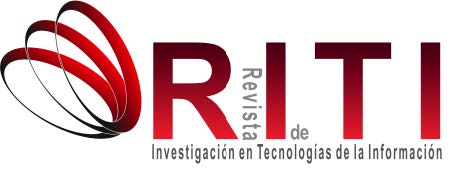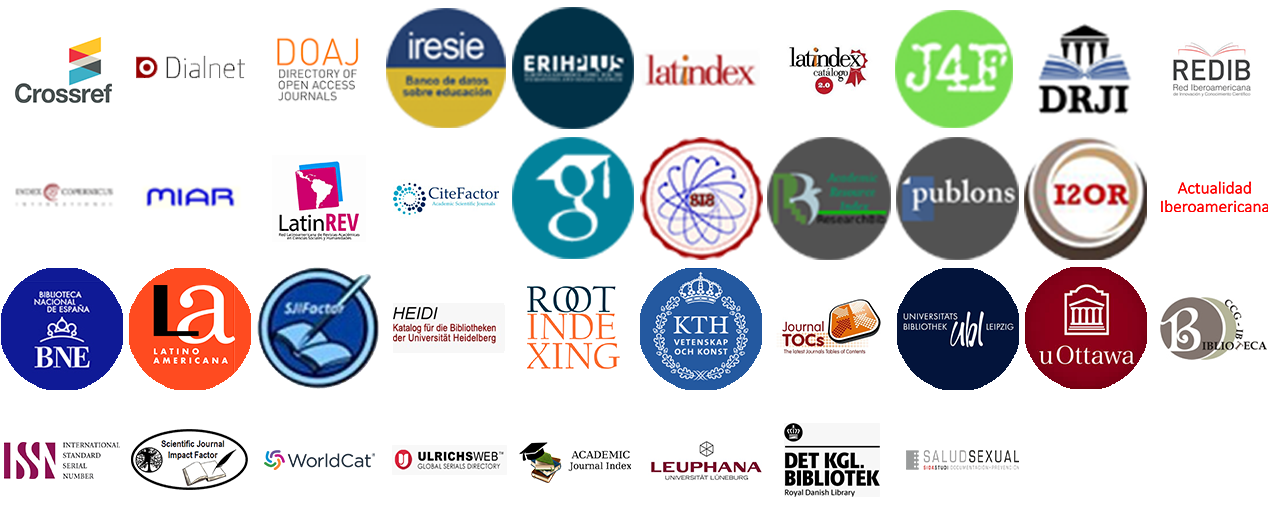INFLUENCE OF THE USE OF SOCIAL NETWORKS AND MOBILE DEVICES IN THE LABOR PERFORMANCE OF EMPLOYEES OF SOFTWARE FACTORIES
DOI:
https://doi.org/10.36825/RITI.04.08.004Keywords:
Social Networks, Mobile Devices, Labor Performance, Software FactoriesAbstract
In the software development companies of the City of Guayaquil it has been possible to show that the developers make use of social networks and mobile devices during their workday. The need arises to carry out a study on the influence of the use of social networks and mobile devices on the work performance of the employees of the software factories, taking into account that they are people who use a computer as a work tool and that generally They have access to the internet. The analysis was enhanced by applying the survey technique and a total of 13 software companies were considered. It was determined that the use of social networks and the use of mobile devices within working hours, influence the performance of developers, both in distraction, delays, analysis, organization, communication, dynamism, quality and compliance.
References
McGrath, F. Top 10 Reasons for Using Social Media. GlobalWebIndex. 2015. URL: http://www.globalwebindex.net/blog/top-10-reasons-for-using-social-media. (05.08.2016).
Navarro, R.; Fridman, S. Ciencias, tecnologías y culturas. Educación y nuevas tecnologías. RILET, Buenos Aires, 2013.
Durango, A. Las Redes Sociales. CreateSpace Independent Publishing Platform, Italia, 2014.
Statista. Most famous social media sites in the U.S. 2016. Statista. 2016 URL: https://www.statista.com/statistics/265773/market-share-of-the-most-popular-social-media-websites-in-the-us/. (07.07.2016).
Senplades. Plan Nacional del buen vivir 2013-2017. 2012. URL: http://www.buenvivir.gob.ec/. (20.11.2015).
Panda Security. 77% of SMB employees using social networking during working hours. 2010. URL: http://www.pandasecurity.com/mediacenter/press-releases/77-of-smb-employees-using-social-networking-during-working-hours/. (16.06.2016).
Olmstead, K.; Lampe, A.; Ellison, N. Social Media and the Workplace. 2016. URL: http://www.pewinternet.org/2016/06/22/social-media-and-the-workplace/. (22.06.2016).
Dagliano, A. The Pros and Cons of Social Media in the Workplace. 2016. URL: http://www.egroupengage.com/blog/the-pros-and-cons-of-social-media-in-the-workplace. (13.07.2016).
Stadd, A. 79% Of People 18-44 Have Their Smartphones With Them 22 Hours A Day [STUDY]. 2013. URL: http://www.adweek.com/socialtimes/smartphones/480485. (13.07.2016)
Careerride. Should mobile phones be banned at workplaces? 2015. URL: http://www.careerride.com/view.aspx?id=24719. (13.07.2016)
Gomez, J. Redes Sociales en el Trabajo. 2013. URL: http://www.merca20.com/redes-sociales-en-el-trabajo/. (01.08.2016).
Riley, G. Mobile phones - the impact on the economy, society and our personal lives. 2013. URL: http://www.tutor2u.net/economics/blog/mobile-phones-the-impact-on-the-economy-society-and-our-personal-lives. (18.08.2016).
Marquina, J. El 86% de las personas accede a Internet a través del smartphone. 2015. http://www.julianmarquina.es/el-86-de-las-personas-accede-a-internet-a-traves-del-smartphone/. (07.08.2016).
Rich, D.; Matt, A. Mobile Device Security in the Workplace: 5 Key Risks and a Surprising Challenge. 2016. URL: http://focus.forsythe.com/articles/55/Mobile-Device-Security-in-the-Workplace-5-Key-Risks-and-a-Surprising-Challenge.(03.06.2016).
gestion.pe. El 78% de los empleados ya utiliza al menos un dispositivo móvil para trabajar, Gestión. 2015. URL: http://gestion.pe/tecnologia/78-empleados-ya-utiliza-al-menos-dispositivo-movil-trabajar-2136926. (15.11.2016).
Dronen, S. How private social media use at work affects work performance. 2014. URL: http://www.uib.no/en/news/82649/how-private-social-media-use-work-affects-work-performance. (08.07.2016).
Downloads
Published
How to Cite
Issue
Section
License
Copyright (c) 2016 Revista de Investigación en Tecnologías de la Información

This work is licensed under a Creative Commons Attribution-NonCommercial 4.0 International License.
Esta revista proporciona un acceso abierto a su contenido, basado en el principio de que ofrecer al público un acceso libre a las investigaciones ayuda a un mayor intercambio global del conocimiento.
El texto publicado en la Revista de Investigación en Tecnologías de la Información (RITI) se distribuye bajo la licencia Creative Commons (CC BY-NC
 ), que permite a terceros utilizar lo publicado citando a los autores del trabajo y a RITI, pero sin hacer uso del material con propósitos comerciales.
), que permite a terceros utilizar lo publicado citando a los autores del trabajo y a RITI, pero sin hacer uso del material con propósitos comerciales.



